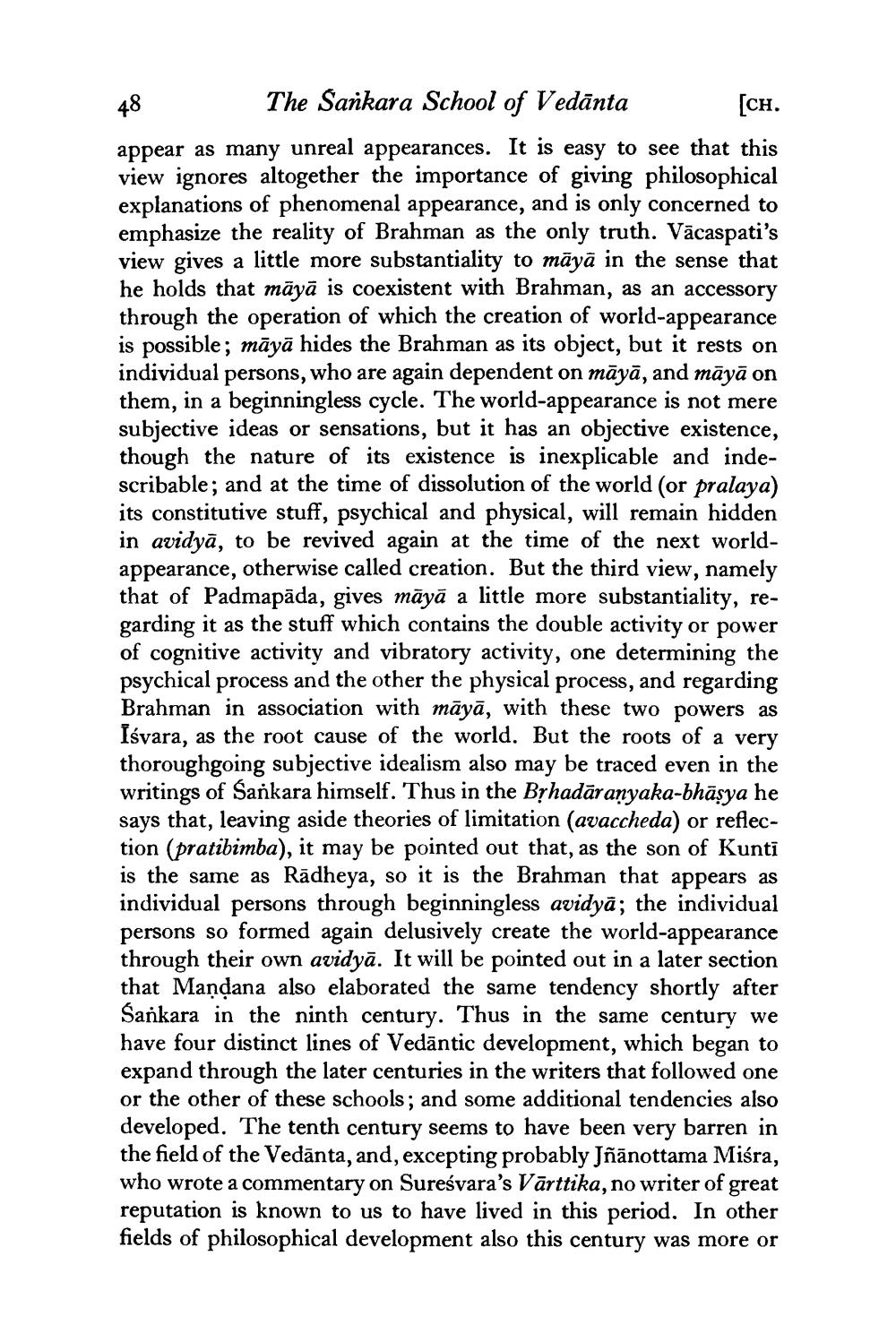________________
48
[CH.
The Sankara School of Vedānta appear as many unreal appearances. It is easy to see that this view ignores altogether the importance of giving philosophical explanations of phenomenal appearance, and is only concerned to emphasize the reality of Brahman as the only truth. Vācaspati's view gives a little more substantiality to māyā in the sense that he holds that māyā is coexistent with Brahman, as an accessory through the operation of which the creation of world-appearance is possible; māyā hides the Brahman as its object, but it rests on individual persons, who are again dependent on māyā, and māyā on them, in a beginningless cycle. The world-appearance is not mere subjective ideas or sensations, but it has an objective existence, though the nature of its existence is inexplicable and indescribable; and at the time of dissolution of the world (or pralaya) its constitutive stuff, psychical and physical, will remain hidden in avidyā, to be revived again at the time of the next worldappearance, otherwise called creation. But the third view, namely that of Padmapāda, gives māyā a little more substantiality, regarding it as the stuff which contains the double activity or power of cognitive activity and vibratory activity, one determining the psychical process and the other the physical process, and regarding Brahman in association with māyā, with these two powers as Isvara, as the root cause of the world. But the roots of a very thoroughgoing subjective idealism also may be traced even in the writings of Sankara himself. Thus in the Brhadāranyaka-bhāsya he says that, leaving aside theories of limitation (avaccheda) or reflection (pratibimba), it may be pointed out that, as the son of Kunti is the same as Rādheya, so it is the Brahman that appears as individual persons through beginningless avidyā; the individual persons so formed again delusively create the world-appearance through their own avidyā. It will be pointed out in a later section that Mandana also elaborated the same tendency shortly after Sankara in the ninth century. Thus in the same century we have four distinct lines of Vedāntic development, which began to expand through the later centuries in the writers that followed one or the other of these schools, and some additional tendencies also developed. The tenth century seems to have been very barren in the field of the Vedānta, and, excepting probably Jñānottama Miśra, who wrote a commentary on Sureśvara's Vārttika, no writer of great reputation is known to us to have lived in this period. In other fields of philosophical development also this century was more or




